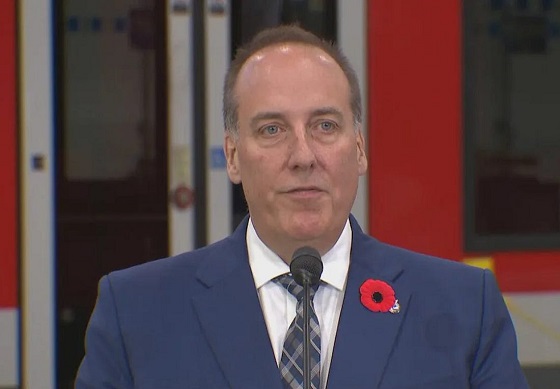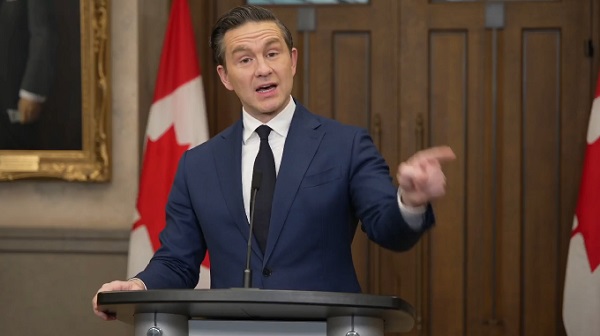Travel
Todayville Travel: Home-Swapping and Hard-Falling In Whistler

I was navigating a black-diamond run at the end of our last day in Whistler. The path dropped through a steep mogul-field then narrowed to a single track in thick forest. I veered hard right through a tiny opening between two Douglas fir trees. I emerged blindly from the dark boughs. Terra firma vanished. I was hurtling off a ten-meter cliff, in free fall.
What was I doing here?
My date with this Whistler precipice had its genesis in – of all places – a golf course in New Zealand. We were teeing it up last March in Nelson, on the South Island, when a fellow-duffer approached us on the first tee. He was solo so Florence and I asked him to join us. He introduced himself as Russ, from Vancouver. We played a pleasant nine holes together, shook hands and parted ways.
“This is just too weird,” said our fellow Canuck. “Let’s have lunch.”
Two weeks later –and a thousand kilometers distant – we were hiking Mount Maunganui, on the North Island. As we arrived huffing and puffing to the summit, there stood Russ and his wife Barb, chatting affably with a fit young Kiwi. We laughed at the coincidence, commented on the fine Austral weather, and moseyed off.
Two weeks distant– and another thousand kilometers removed – we were examining a cross-section of New Zealand’s biggest and oldest tree – a 3000 year-old Kauri – at the aptly named Kauri Museum in the tiny west coast village of Matakohe, when who to my wondering eyes should appear but good old Russ.
“This is just too weird,” said our fellow Canuck. “Let’s have lunch.”
So, over flat-white coffee and whitebait (a hideous Kiwi delicacy consisting of fried egg and a worm-like fish), the four of us sat, laughed and marvelled at the wonders of New Zealand – and our trifecta of coincidental encounters.
The Feehans were – as usual – travelling without reservation, flying by the seat of their pants and scrambling daily for nightly accommodation. Russ and Barb were at the other end of the organizational spectrum. They were happily bunked in just two spots during their entire two-month sojourn to New Zealand. As members of www.homelink.com/ they had exchanged their house in Vancouver for accommodation Down Under.
Russ and Barb travel in a sphere of gratis lodging, swapping their Vancouver abode – and Whistler condo – for digs the world over.
I pondered the merits of our pleasant home in Red Deer and looked at Russ, wondering whether he and Barb might enjoy a holiday in frozen, flat central Alberta. But Russ didn’t look like he’d been born yesterday.
Then I remembered our condo in Kimberley. It’s a great spot in B.C’s lovely Purcell mountains.
And that’s how we ended up in a quaint ski chalet for a week on Nita Lake, in Whistler. In return, Barb and Russ will be golfing and biking the Kootenays for a week in September chez Feehan.

Preparing for a day of skiing at Chez Russ and Barb
We haven’t signed up for Homelink yet – but what a great concept: why leave your home vacant and idle, spending a whack on hotels, when you can swap for free domicile across the pond (or at Whistler)?
My only previous Whistler experience occurred in 1984, and although the 80’s weren’t exactly the 60’s, still I recall very little of that trip. I do remember a wild and crazy Doug and the Slugs concert, performed al fresco in the Whistler Village common. And I recollect that Bill Johnson won the World Cup downhill in 1 minute 54 seconds. (Billy was the quintessential American bad-boy. The great Franz Klammer derisively referred to him as a “nasen-borer”.)
We skied that same downhill run with our friends from Saskatoon in January. It took me just under nine minutes top to bottom – and I cheated, stopping the clock each time I paused to rest my weary legs – or discreetly probe my proboscis.
Whistler is slightly more sophisticated than sleepy Kimberley. Kimberley’s Northstar Mountain has five chairlifts. Whistler and her sister mountain Blackcomb have 37, including the incredible Peak 2 Peak gondola that spans 4.4 kilometers and whisks skiers between the two resorts in a matter of minutes. When completed a few years ago it was the longest and highest lift in the world.

Peak 2 Peak Gondola
The lift capacity at Whistler/Blackcomb is an unimaginable 65,507 skiers per hour. At that rate the entire population of Red Deer could be boosted to the top of the mountain in about an hour and a half.

Gerry’s Volkls (front right) stacked amongst hundreds of other skis
Snow conditions throughout B.C. have been great this year. Each day tens of thousands of stoked skiers shared Whistler’s terrain with us. The 2010 Olympics ended nearly 9 years ago, but the party carries on. The hills and streets echo with languages and accents from around the globe.

The Olympics ended almost nine years ago but the Whistler party carries on
Our Saskatchewan friends, Joe and Carla, are gung ho: first in line for the 8:30 a.m. gondola opening and last down the hill for après ski festivities. They frequent the blue runs (easily logging over 20,000 vertical feet in a day). I enjoy these cruising runs but find I lack speed restraint – and my aging bones aren’t up for a high-velocity crash. My new passion is tree skiing, a slower but more rewarding, methodical way of descending the hill.
And that’s how my encounter with the Whistler precipice happened.
Arcing headfirst, I careened down the snowy cliff-face, employed an unintended somersault and landed flat in the middle of a cat track. I lay still, a puddled mess, piecing together the previous few moments of existence.
Miraculously, I was unscathed. My skis and poles were jammed part way up the cliff, deeply scathed. I climbed up, retrieved my battered equipment and tentatively skied down to the chairlift where my Saskatoon acquaintances awaited. It was they who had suggested I might enjoy that treacherous black trail.
“How was the run?” asked Joe.
“I wouldn’t recommend it,” I said, emptying snow from inside my goggles.
That night we relaxed in front of a roaring fire, enjoying the view across Nita Lake and the glowing mansions fronting Whistler.

The foggy daytime view across Nita Lake
In the morning we bid adieu to our prairie friends and our Whistler digs, packed the Subaru and, avoiding the congested Vancouver corridor, took an alternate route home, north up Hwy 99 through Pemberton and down the narrow, perilous pass into Lillooet and thence back onto Hwy 1 at Kamloops. En route I had a rather close call with a cliff. But that’s another story.

Hwy 99 North through Pemberton and Lillooet is spectacular and avoids busy Vancouver
Gerry Feehan QC practised law in Red Deer for 27 years before starting his second life as a freelance travel writer and photographer. He says that, while being a lawyer is more remunerative than travel writing, it isn’t nearly as much fun. When not on the road, Gerry and his wife Florence live in Red Deer and Kimberley, BC. Todayville is proud to work with Gerry to re-publish some of his most compelling stories from his vast catalogue developed over more than a decade of travel.

Gerry Feehan
Click to read an excellent story about the Turks and Caicos or Hana Hawaii
Business
Looming Air Canada strike highlights need for more competition in the air

From the Fraser Institute
By Alex Whalen and Jake Fuss
Air travelers in Canada are facing a major disruption as Air Canada’s flight attendants threaten strike action. Air Canada says the strike could affect 130,000 passengers per day from coast to coast.
Currently, two airlines control between roughly half and three quarters of all air travel at Canada’s major airports. When either Air Canada or WestJet face a disruption, a large share of Canada’s overall air traffic is affected. In recent polls, a majority of Canadians have said they feel like Canada’s system of air travel is “broken”. Passengers experiencing hardship should cheer for more competition in Canada’s airline industry.
Increased competition has multiple benefits. When one airline inevitably faces a disruption, passengers would have more options to book with other carriers. Competition also tends to lead to lower prices and better service across the board for the customer, as power shifts away from the supplier and toward the consumer.
Unfortunately, Canada’s skies are largely sealed off from competition.
Due to restrictive federal rules known as “cabotage”, foreign airlines may fly to Canadian airports, but they cannot operate routes exclusively within Canada. For example, a foreign airline such as Delta can fly from New York to Toronto, but cannot then fly from Toronto to Montreal. This policy limits choice and competition within Canada.
In contrast, the European Union removed cabotage restrictions for member-states in the 1990s. The result? More competition (including from new low-cost carriers such as Ryanair), a 34 per cent decline in ticket prices (adjusted for inflation), more cross-border routes, and greater flight frequencies. The entry of new low-cost carriers alone helped lower airfares by 20 per cent.
But new entrants into the industry, including low-cost carriers, face significant barriers to entry in Canada, with foreign ownership restrictions compounding Canada’s competition problem. Currently, the Canada Transportation Act caps foreign ownership of Canadian airlines at 49 percent, and no individual foreign investor can own more than 25 percent of the voting shares.
Starting a new airline is obviously a big undertaking, in part because of the large amounts of capital required to acquire a fleet of airplanes. These rules limit the ability of new entrants to raise the necessary investment capital to compete in the Canadian market.
Loosening these restrictions was recently recommended by Canada’s Competition Bureau, which had been tasked with studying the dismal state of competition in Canada’s airline sector. Earlier this year, we authored a study published by the Fraser Institute which reviewed international best practices in airline policy. Based on this review, we recommended Canada remove foreign ownership restrictions, among numerous other recommendations where Canada is offside with peer countries, including the need for lower taxes and fees, changes to Canada’s airport ownership structure, and a more competitive regulatory burden.
The looming Air Canada strike is just the latest in a long list of regular disruptions faced by Canadian air travelers. While such disruptions may never be fully eliminated, government policy is making the situation worse than it needs to be. Cabotage and foreign ownership restrictions should be removed to provide consumers greater choice when it comes to air travel.
Business
Competition Bureau recommends bureaucratic power grab over airline industry

From the Fraser Institute
By Matthew Lau
According to the Competition Bureau’s recent market study of Canada’s airline sector, “Competition delivers major benefits to Canadian travellers. Beyond lower prices, competition drives quality improvements and innovation.” This statement about economic competition is correct. Unfortunately, however, some of the Bureau’s other ideas about economic competition are fundamentally wrong and its poor proposals, which would damage the airline industry, are mixed in with beneficial proposals.
Let’s begin with what the Competition Bureau, a law enforcement agency that reports to the federal government, gets right. Three of the 10 recommendations in the Bureau’s market study relate to opening Canada’s airline sector to international competition. Allowing more international competition is an commonly proposed idea (including in a Fraser Institute study earlier this year) and a good one.
Specifically, the Bureau recommends raising the single-investor foreign ownership limit for Canadian airlines to 49 per cent, allowing 100 per cent foreign ownership for domestic-only Canadian airlines, and working with other countries to remove foreign competition restrictions. The Bureau also recommends reducing regulatory costs for northern operators to support northern and remote market access, and opening government contracts to as many bidders as possible to get better value for taxpayer dollars.
Alas, despite these good ideas for protecting or improving competition, the recommendation at the top of the Competition Bureau’s list is negative, founded on a poor understanding of economic competition, and places far too much faith in the power of government intervention to preserve or improve competition.
“We recommend adopting a system of parallel reviews,” reads the study. “Under this system, both the Commissioner of Competition and the Minister of Transport would conduct independent reviews. Either process could block a transaction, and deals could only proceed if they cleared both reviews.”
In other words, the Competition Bureau proposes the Commission of Competition (the head of the Bureau) have veto power over airline mergers and acquisitions. The stated intention is to disallow anti-competitive mergers or collaborations, but this appears to be a bureaucratic power grab that would block transactions that benefit airline passengers and likely reduce investment in the airline sector.
Speaking to a parliamentary committee last year, a deputy commissioner with the Bureau pointed out that it had opposed three airline mergers in recent years—all of which the federal government finally approved despite the Bureau’s opposition, although with onerous political conditions.
The Competition Bureau laments industry concentration (the degree to which a few large players serve a high proportion of the market), but as a Montreal Economic Institute analysis on airline competition noted, “both economic theory and empirical evidence suggest that it is barriers to entry rather than the size and number of firms in a market that matter.”
Indeed, this was a key economic insight explained by Joseph Schumpeter more than eight decades ago. Industry concentration is not inherently negative and may well result from suppliers and consumers freely making decisions with their own money. Government barriers to entry, which tend to cause industry concentration, is the real problem.
If economies of scale allow large airlines to operate more efficiently than small ones, airline passengers may well be better off when two airlines merge. Or, if an airline is financially distressed, its acquisition by another airline may allow it to continue operations and maintain services. And if airline investors realize they may not be able to eventually exit their investments by selling to other airlines, the long-run effect will be to reduce airline-sector competition and investment.
The Competition Bureau seems to grasp that barriers to entry, not concentration, are the problem by saying its goal “is not always to promote multiple carriers on every route” but rather to promote a competitive environment “where the best airline serves each route but knows it can be replaced.” Yet the Bureau’s hostility towards past airline mergers, as well as value-creating mergers in other industries, suggests it does not apply this thinking consistently and seeks to block even transactions that generate significant economic benefits.
The Bureau’s new report gets some things right, but more bureaucratic power over the airline industry will not help Canadians. The Competition Bureau simply should not have veto power over airline mergers and acquisitions.
-

 Health2 days ago
Health2 days agoLack of adequate health care pushing Canadians toward assisted suicide
-

 Alberta1 day ago
Alberta1 day agoATA Collect $72 Million in Dues But Couldn’t Pay Striking Teachers a Dime
-

 National1 day ago
National1 day agoWatchdog Demands Answers as MP Chris d’Entremont Crosses Floor
-

 Artificial Intelligence2 days ago
Artificial Intelligence2 days agoAI Faces Energy Problem With Only One Solution, Oil and Gas
-

 Artificial Intelligence1 day ago
Artificial Intelligence1 day agoAI seems fairly impressed by Pierre Poilievre’s ability to communicate
-

 Media1 day ago
Media1 day agoBreaking News: the public actually expects journalists to determine the truth of statements they report
-

 Business1 day ago
Business1 day agoLiberal’s green spending putting Canada on a road to ruin
-

 Alberta5 hours ago
Alberta5 hours agoCalgary mayor should retain ‘blanket rezoning’ for sake of Calgarian families











